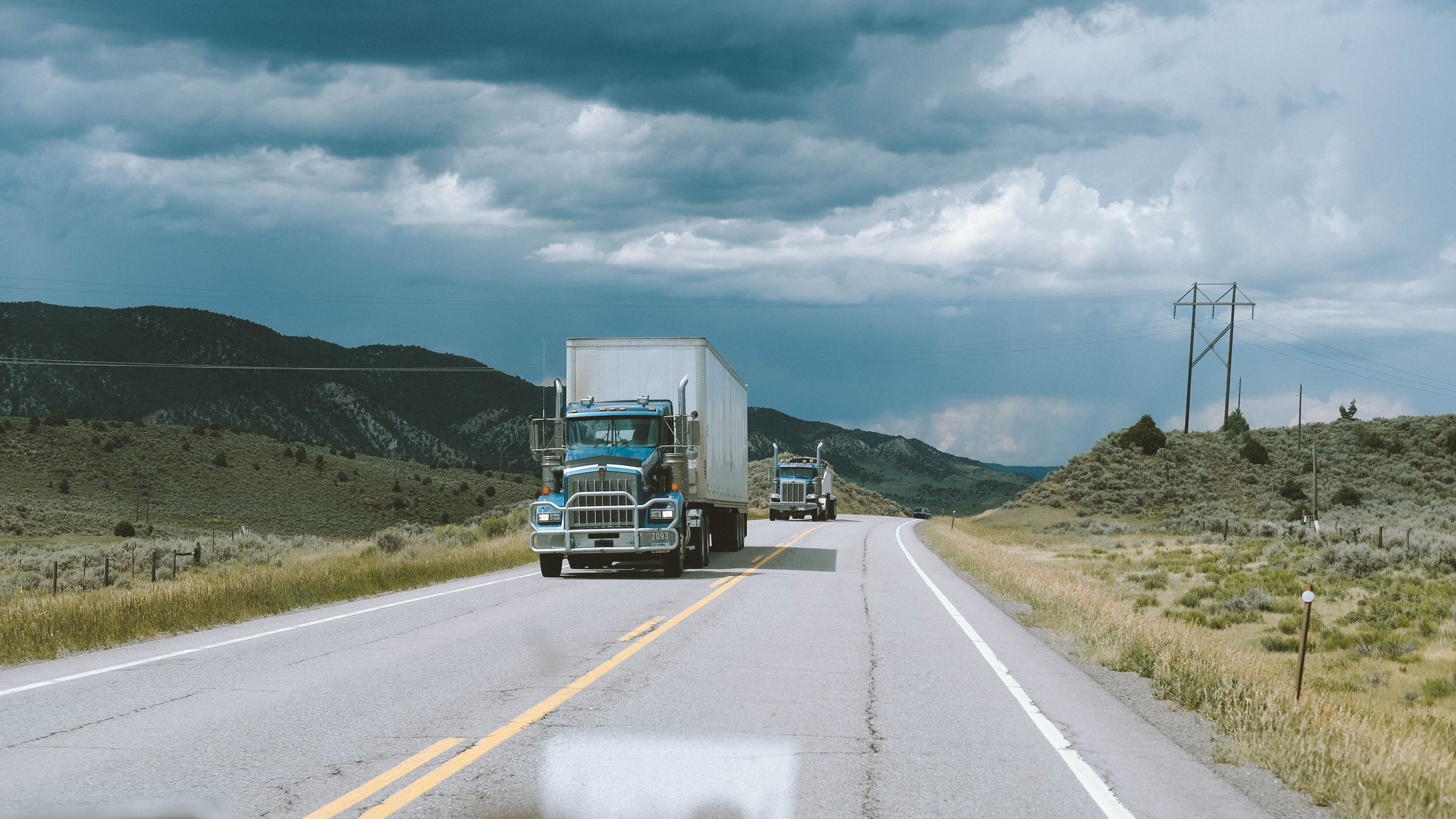How to Build a Safety-First Culture in Logistics: 7 Top Tips
Gamification: workforce training savior or gimmick with no lasting impact? In this blog, we dig into the debate on whether it's an essential - or not.
TABLE OF CONTENTS
In logistics and transportation, there can be tension between getting things done safely and delivering on time. Yet time pressures needn’t impact safety. It’s possible to have both - a culture of safety and success. The best way to do this is by building a safety-first culture.
Arguably, safety is more important in the transportation and logistics industry than in many other sectors. After all, truckers, delivery people, and bus or train drivers put the wider public at risk if safety isn’t a top priority.
Latest figures from the US Bureau of Labor Statistics show 913 fatal work injuries occurred in the transportation and warehousing sector in 2019 - the second highest of all sectors listed.
Creating a safety-first culture for transportation and logistics companies is clearly a pressing issue. Fortunately, the seven steps below show how your organization can build a culture that lowers risk for employees and the wider public.
1. Effective communication
Clear communication at work is crucial for preventing accidents and building a culture that puts safety first. Open lines of communication must be three-way. Not just top-down but also bottom-up and side to side.
Organizational culture is often defined as ‘the way we do things around here’. For safety to be integral to the way things are done, clear and open communication must be highly valued.

Regular updates can keep safety front of mind and show employees that your organization is serious about reducing accidents and incidents. Weekly in-person safety briefs aren’t necessary. Safety updates and reminders can be quick, memorable, and interactive with eduMe’s short messages, videos or images delivered directly to employees’ smartphones.
The great thing about this method of communication is that it’s fast, easy, and accessible. There’s a greater chance employees will engage with video messaging. A Forrester Research report found employees are 75% more likely to watch a video than reading documentation.
2. Continuous Learning
Thorough training is critical when starting out. Learning needs to be ongoing for a safety-first culture to blossom. Situations change and people forget what they learned. It’s surprising how fast we forget things if not repeated or practiced.
The ‘forgetting curve’, a term coined by Hermann Ebinghaus, shows that around 50% of new information is forgotten within an hour of it being presented. After a week about 90% has slipped our minds.

Short, simple to follow safety lessons that only take a few minutes are an ideal way to consolidate learning and mitigate the effects of the forgetting curve. They easily fit into a busy schedule, solidify memories, and are perfect for organizations with mostly remote workers.
For example this short eduMe lesson shows how to lift objects safely to ensure your workforce avoids injuries leading to lost work days and potentially damaged goods. Click through the lesson below or scan the QR code to view it on your phone.
Sharing best practices and creating opportunities for employees to mentor colleagues also builds a culture of safety. Research conducted by the Commercial Truck and Bus Safety Synthesis Program (CTBSSP) found drivers with more years of experience and time with the same organization contributed to a culture of safety.
Pairing experienced colleagues with new recruits improves engagement and retention for both parties. Providing digital mentoring and accessible, remote employee training is good for business - it shows you care about employees and their safety, and that you’re a company with one foot in the future.
3. Establish a positive feedback process
A safety-first culture is one where every member of your organization thinks about safety. They report accidents, near misses, and ideas for improvement. Your drivers, warehouse workers, and packers can be your best resource when it comes to innovating new or simpler ways to mitigate risks.
Employees are often the ones who spot risks and opportunities for safer ways of working first. Involve them in reviewing safety policies and procedures by asking for their thoughts and feedback.
The process for reporting incidents must be made clear in order to support the workplace expectation that incidents, near-misses, and ideas for safety improvements are shared.
Reporting incidents and near misses is critical for ensuring and improving safety in the future. Weekly feedback gathering prompts employees to call on their firsthand experience to help inform how safety processes could be improved.
Fire off easy to create, easy to complete single-question Pulse Surveys to promote engagement and collect critical information. This will simultaneously boost performance - employees who feel heard are 4.6 times more likely to perform at their very best.
-
Related: What is a ‘Pulse Survey’?
4. Appoint supervisors

After noticing the times commercial trucks were involved in fatal accidents, Hogan employed a fatigue supervisor to cover late shifts. These supervisors touch base with all drivers working between 11pm and 5am to ensure they’re alert enough to drive safely through their nightshift.
This prevents your employees - from warehouse workers to HGV drivers - from becoming involved in accidents by empowering them to take initiate and make safety-first decisions when they feel fatigued, or in other adjacent circumstances.
5. Quality Assurance Assessments
Could you easily and with confidence identify how much any individual in your workforce knows, and back up this claim with easily accessible, material evidence that proves compliance and is up-to-date (read: less than 2 years old)?
Delivering relevant Health & Safety and Compliance training in order to meet government and corporate regulations is part and parcel of operating in the industry. However, proof of compliance via formal certification is either required just once or repeated at infrequent intervals. To build a better safety culture, past performance should never be relied on as an indicator of current capability.
For example, a trucker might have obtained their Hazmat Endorsement, but it’s unlikely that if quizzed 2.5 years later, they’d still score highly on their Hazardous Materials CDL Knowledge written exam as knowledge retention decreases over time - knowledge retained is knowledge that is reinforced. This is where digital assessments come in handy.
By including a brief assessment with a minimum score at the end of a refresher course on a topic, you can create a barrier to providing services until an employee has proven their level of knowledge - and therefore competence - to carry out tasks that pose a risk, safely.
Not only does this prevent the unprepared from engaging in safety-compromising activities that could lead to injury, but it gives you a live snapshot of who knows how much. Access to this information can inform your next steps with an employee and help build awareness and accountability.
Having an up-to-date documentation of an individuals’ scores, number of attempts and so on, also provides you with a comprehensive digital record of an employee’s performance, in the event that you’d need to substantiate such information.
6. Management modeling
You need to walk the talk when it comes to building safety-first cultures. Everyone in your organization - including the CEO - needs to display the behavior you want to see within the business. So, put on your high-vis vest when visiting the warehouse floor.
Make sure you not only provide all the necessary PPE and safety equipment, but use it when needed. When incidents do occur, investigate them thoroughly so your organization can learn from them.
7. Accountability
Organizations with great cultures for safety are ones in which every member of staff feels responsible for their own and their colleagues’ safety. That feeling can be summed up in one word - accountability.
Taking responsibility for mistakes, collaborating with colleagues, being clear about expectations, and speaking up when needed are all part of accountability.
Asking for and acting on feedback, problem-solving without blaming, and looking at failure as an opportunity to learn are some of the behaviors that build accountability.
8. Celebrate success
Positive reinforcement is the best way to get more of the behavior you want and less of what you don’t.
Celebrating safety successes positively reinforces a safety-first culture. If you’re trying to increase reporting of near-misses, think about rewarding, or publicly recognizing employees who have higher reporting levels.
eduMe Messages break down communicational barriers and allow you to readily communicate with anyone, anywhere in a concise manner. Send out a video message team-wide on Monday mornings recognizing team successes to engage employees, motivate high performers and boost morale.
Brown Trucking uses rewards to recognize and motivate their drivers. Employees who reach a million safe miles with the company receive an embroidered leather jacket and an invitation to a congratulatory dinner.
When you incorporate a safety-first culture into your company, it becomes second nature - a natural part of the way you do things. Incidents go down, reducing your costs and bolstering brand reputation and productivity. Creating a safety culture is a crucial component of achieving Workforce Success - the ongoing success of the whole company that relies on the success of each individual.
eduMe’s Workforce Success platform supports safety-first cultures with clear and consistent communication, bite-sized safety videos, Assessments, and reminders sent directly to employees’ smartphones. With eduMe you can rest assured that wherever your team is, and however they are working, they have vital risk-reducing knowledge in the palm of their hands.
Join leading logistics companies that have reduced injuries by up to 26% with eduMe 👇
Join 10,000+ frontline leaders
Subscribe to ‘Training the Frontline’ and get weekly insights sent straight to your inbox.

